Solar-powered iconic buildings? There’s a map for that!
At MyHEAT, we’re all about Energy Made Visible™. Using advanced geospatial imaging, a dash of machine-learning processes, and a sprinkle of cool software development, we create engaging map-based platforms to visualize energy, whether in the form of heat loss from buildings, or the solar potential of rooftops.
Maps are meant to be viewed and as visually engaging as possible – our mapping platforms are no exception. When you build a platform based heavily on visual imagery, you occasionally come across some extremely interesting buildings with curious shapes and sizes!
Our SOLAR Maps can display the potential for millions of buildings around the world in the residential, commercial, and industrial sectors. In this blog post, we’ve compiled a list of some of Canada’s most interesting, iconic, and oddly-shaped buildings. We’ve even included some buildings that have “celebrity status” and we’ve included the visual solar energy potential for all of these rooftops!
In the images below, you’ll see a solar shading scale applied to each rooftop that ranges from purple (heavily shaded, little direct sunlight) to bright yellow (fully exposed to the sun).

Take a look and see if you can recognize any of these buildings from the aerial image!
1. Rideau Cottage, Ottawa, Ontario
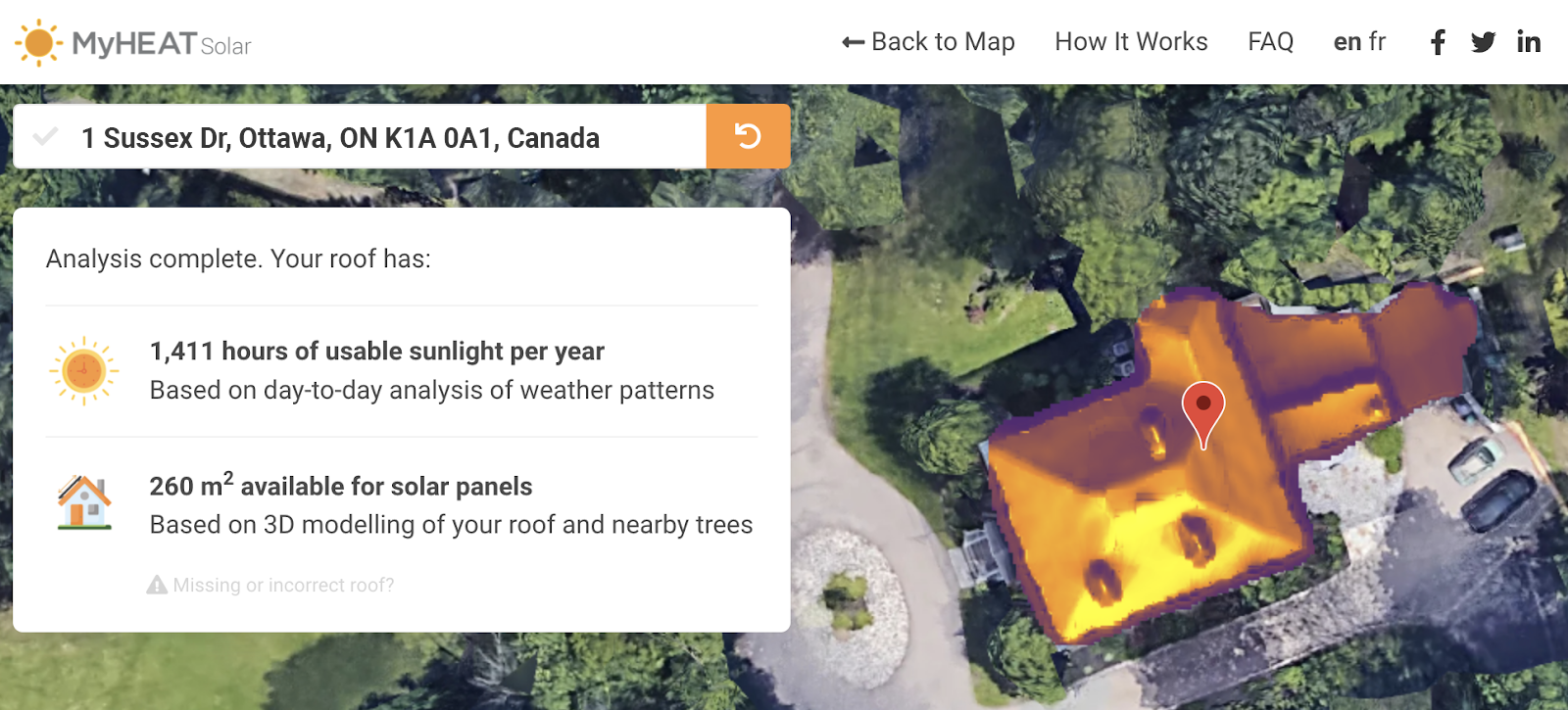
Knock, Knock.
> Who’s there?
Trudeau.
> Trudeau who?
It’s true though that your cottage has great solar potential!
The infamous Rideau Cottage was built in 1866 and is the current residence for Canadian Prime Minister Justin Trudeau and his family. At 155 years old, it’s probably due for some energy-efficient upgrades. Mr. Trudeau, let’s get some solar panels on that roof, there’s 1,411 hours of usable sunlight per year for the cottage’s rooftop! After all, Canada does have ambitious greenhouse gas emission reduction targets to achieve before 2050…
2. Canadian Museum of Nature, Ottawa, Ontario
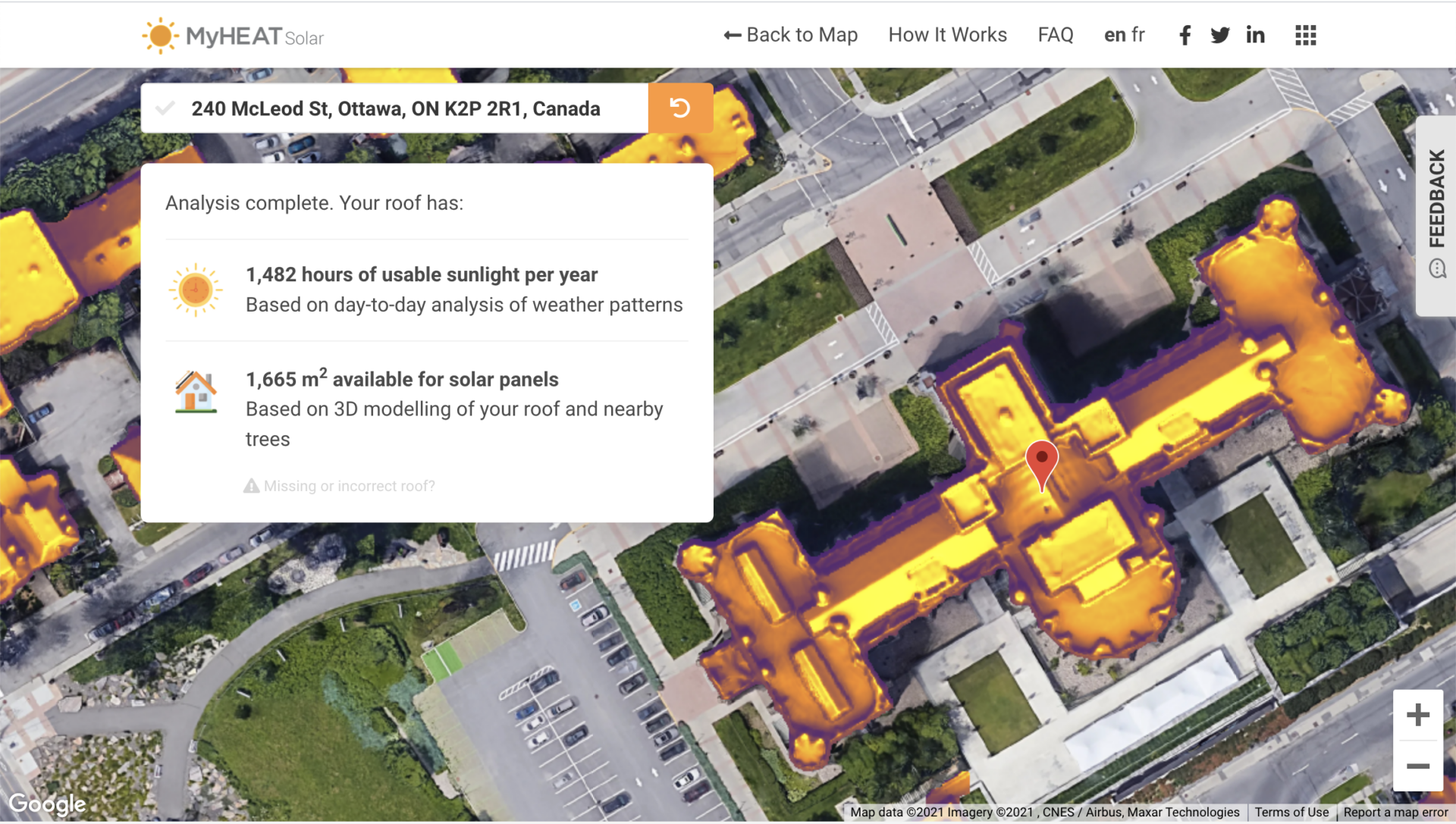
As a nature nerd, the Canadian Museum of Nature is an amazing museum to spend several hours taking in all the wonder and genius of nature. What better way to do that than with your experience powered by solar energy?
This beautiful building has an extensive footprint and no tall buildings or vegetation nearby to cast shade on its long, peaked rooftop. Solar for the win!
3. École Joseph-François-Perrault, Montréal, Québec
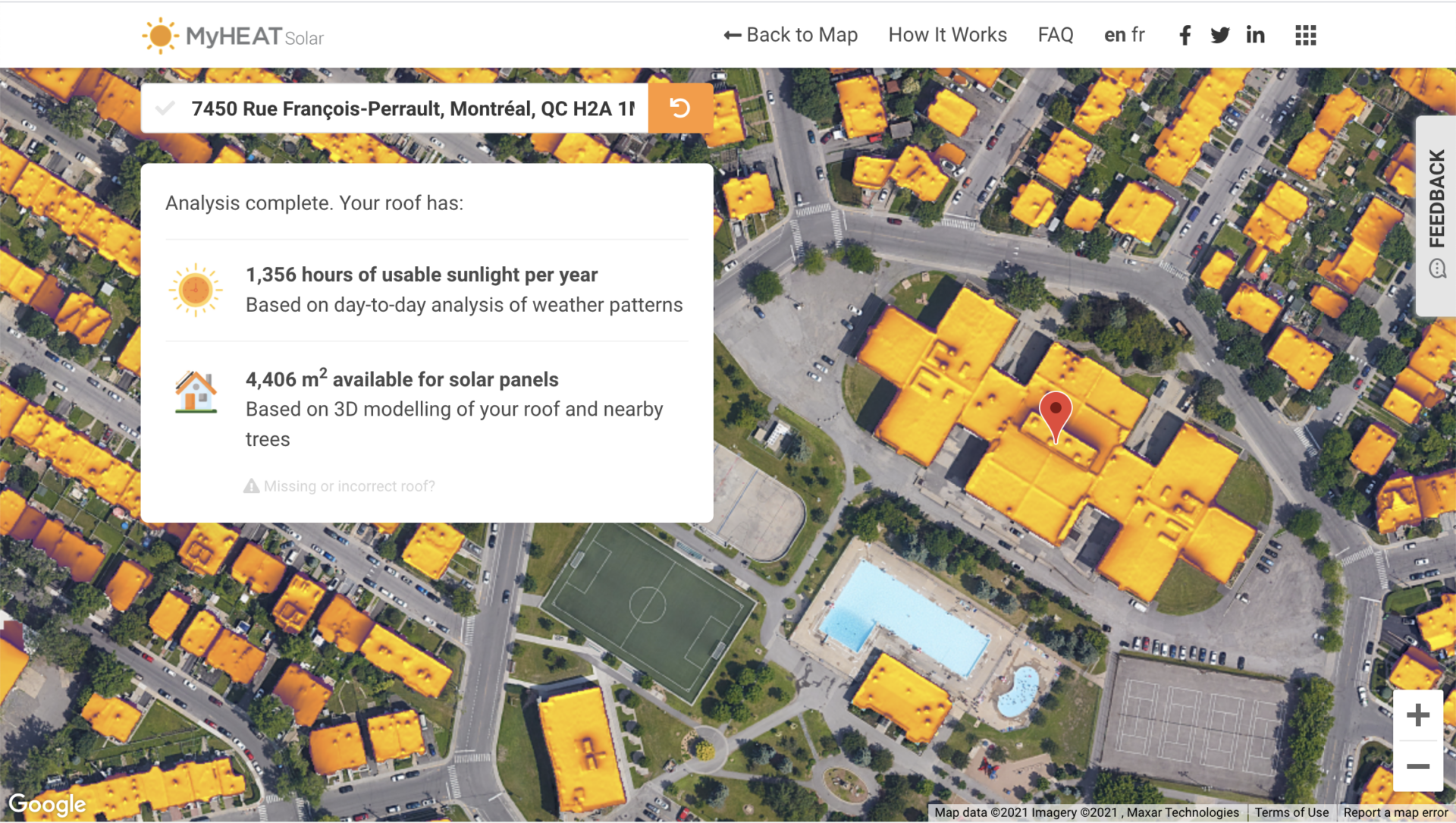
This secondary school located on the Island of Montreal is a large building (4,406m2 available for panels!), with a mostly flat rooftop and no buildings or tall trees nearby to cast shade. There are sports facilities adjacent including tennis courts and swimming pools.
This rooftop could easily accommodate a large solar array (140+ panels or approx. 35kW) and would be a great way to power the school’s energy needs, as well as teach students about the value of solar energy!
Read more about what is community solar?
4. City Hall, Toronto, Ontario

This iconic building in the downtown heart of Toronto may not be immediately recognizable from above, but its unique cylindrical rooftop over the main building, enclosed by two boomerang-shaped towers certainly makes for an interesting aerial shot. For the Star Wars fans out there, I know what you’re thinking – this looks a lot like a Tie Fighter, and I don’t disagree with you!
The main circular roof is in fact much closer to the ground than the surrounding towers, and so it’s mostly shaded by the towers themselves. While solar panels could be installed there, the much brighter yellow rooftop areas of the towers would make a better choice for a solar array.
Toronto’s City Hall has also been featured in several movie and tv productions, including The Handmaid’s Tale and Resident Evil: Apocalypse!
5. R.C. Harris Water Treatment Plant, Scarborough
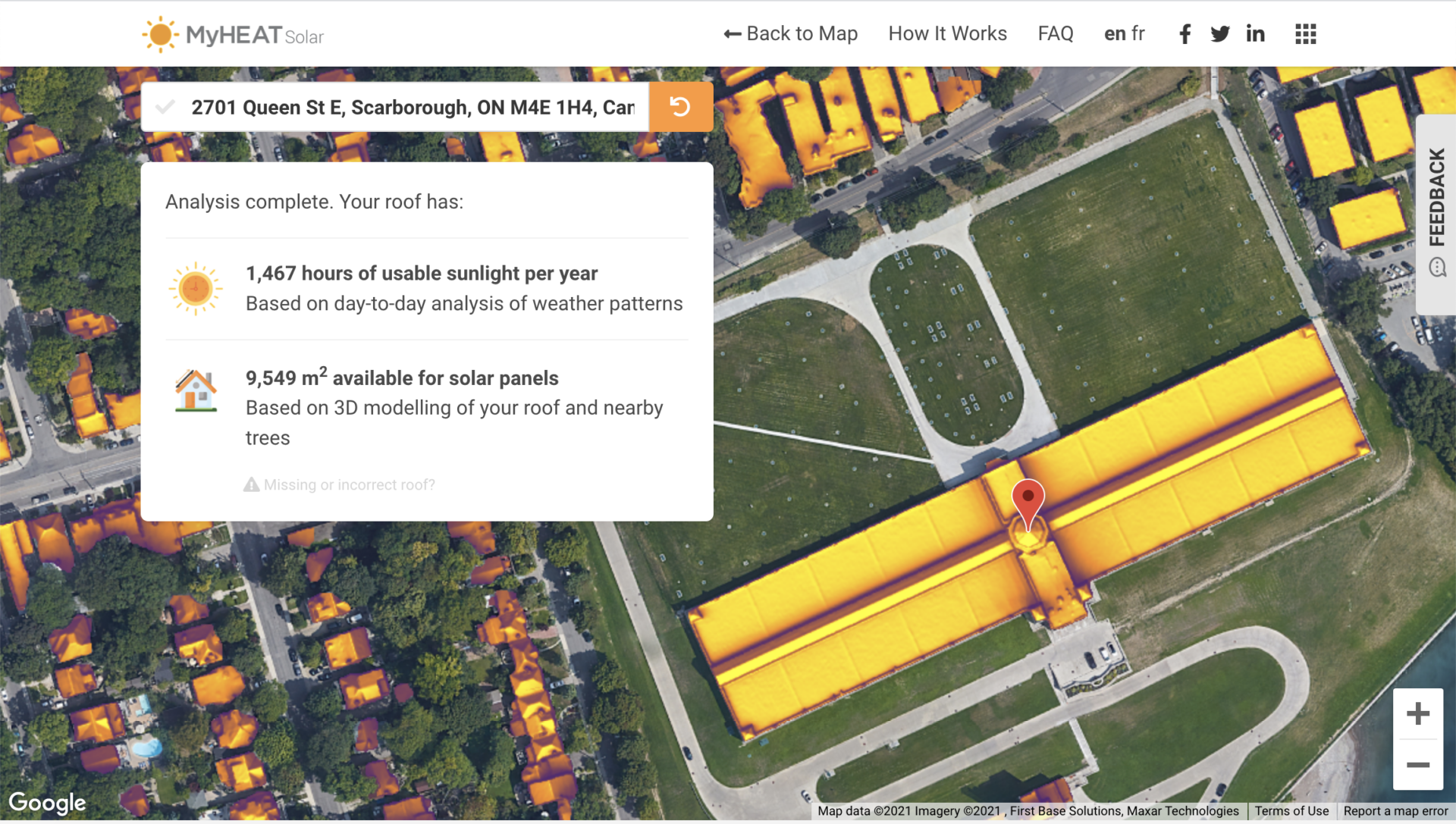
Clocking in at one of the largest buildings in this round-up with 9,550m2 of available rooftop area for solar panels is the R.C. Harris water treatment plant in Scarborough, Ontario. This building has an extremely large and flat roof reminiscent of a space satellite, which are quite often seen with solar ‘sails’ to power operations on board.
Situated right on the waterfront of Lake Ontario, this rooftop is prime for a large solar array to power the plant. The plant provides clean drinking water for approximately 45% of the Toronto and North York region, and with beautiful features designed to make an architectural statement, it has been dubbed the ‘Palace of Purification’.
Clean drinking water powered by the sun sounds like a perfect union!
6. Dynamic Earth Educational Science Centre, Sudbury, Ontario
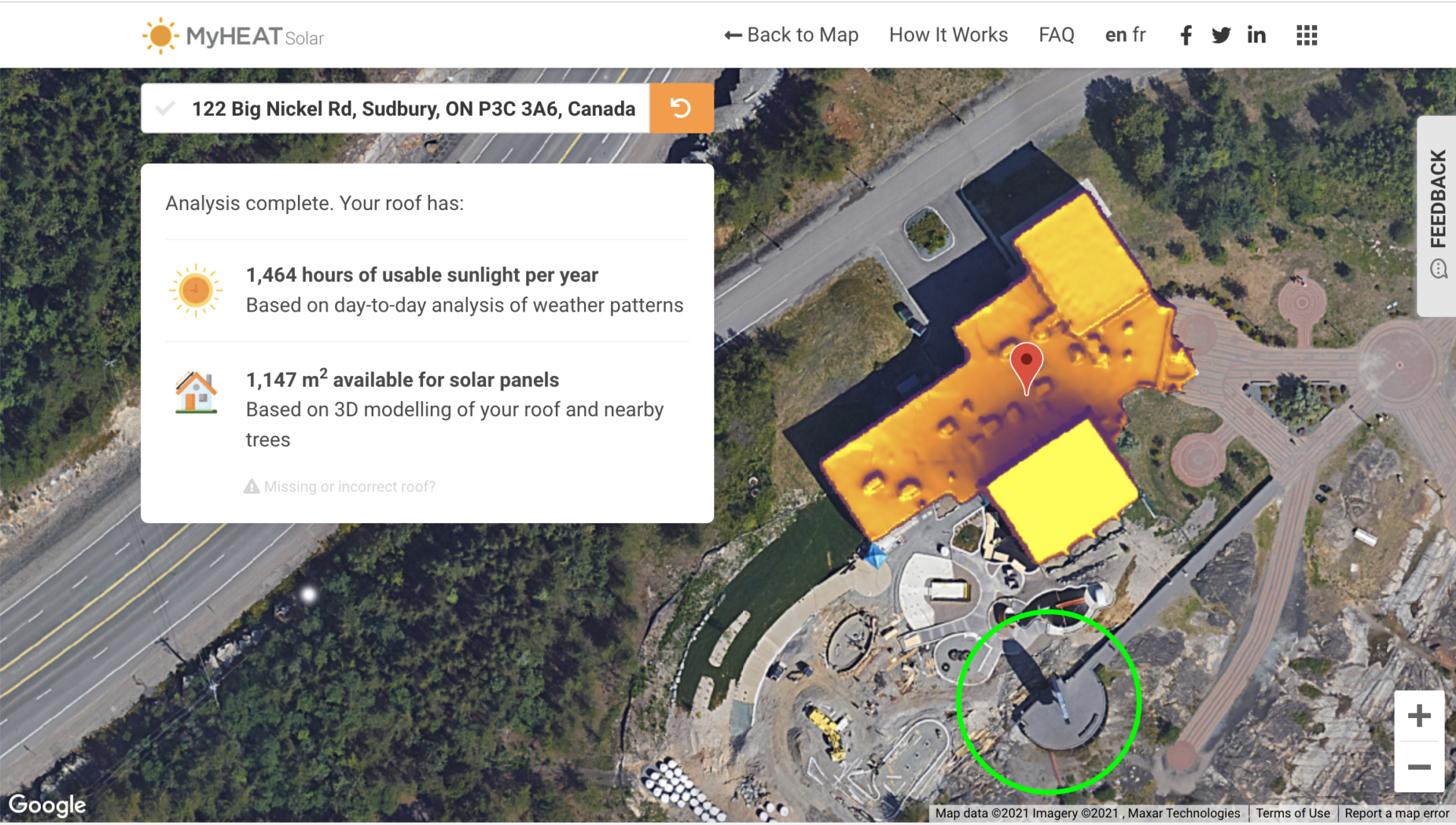
Sudbury, Ontario; home to the site of the second-largest meteorite impact known in the world which left vast deposits of minerals and metals, including nickel, copper, palladium, and gold that are still mined in great quantities today.
In commemoration of this history, ‘The Big Nickel’ was constructed and installed – a 30ft replica of the Canadian 5c coin. In this image, you can see the shadow cast by the Big Nickel just below the Dynamic Earth Education Science Centre on the same site.
The Dynamic Earth Centre has a large rooftop footprint with one elevated part of the building (in bright yellow), and has great solar potential. It would be fitting to power this educational centre with solar since it is a site that honors the history of a great meteorite that slammed into our earth – the result of chaotic universal activity about 1.8 billion years ago!
7. Manitoba Legislative Building, Winnipeg, Manitoba
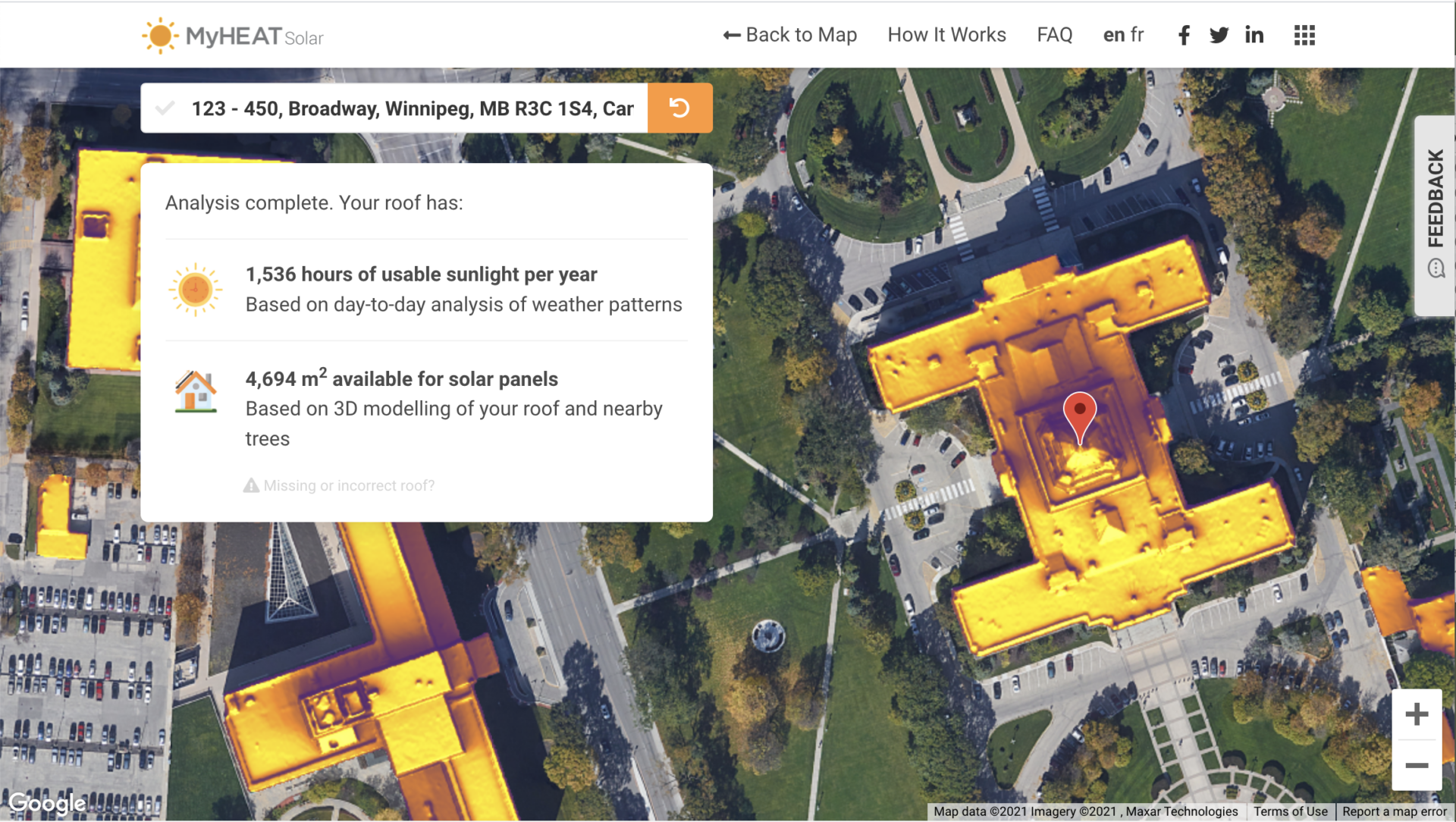
The Manitoba Legislative Building in Winnipeg, Manitoba is a beautiful building and a designated Provincial Heritage Site that was completed in 1920.
The rooftop is predominantly flat with the anterior part brightly coloured in yellow. The building is mostly south-facing, making this an ideal area of the rooftop for a solar array. In the image, you can distinguish the building’s tall copper dome in the center, which casts shade (purple coloured areas) north of it, with a bright yellow front area exposed to the sun.
8. Hatley Castle, site of Royal Roads University, Victoria, British Columbia
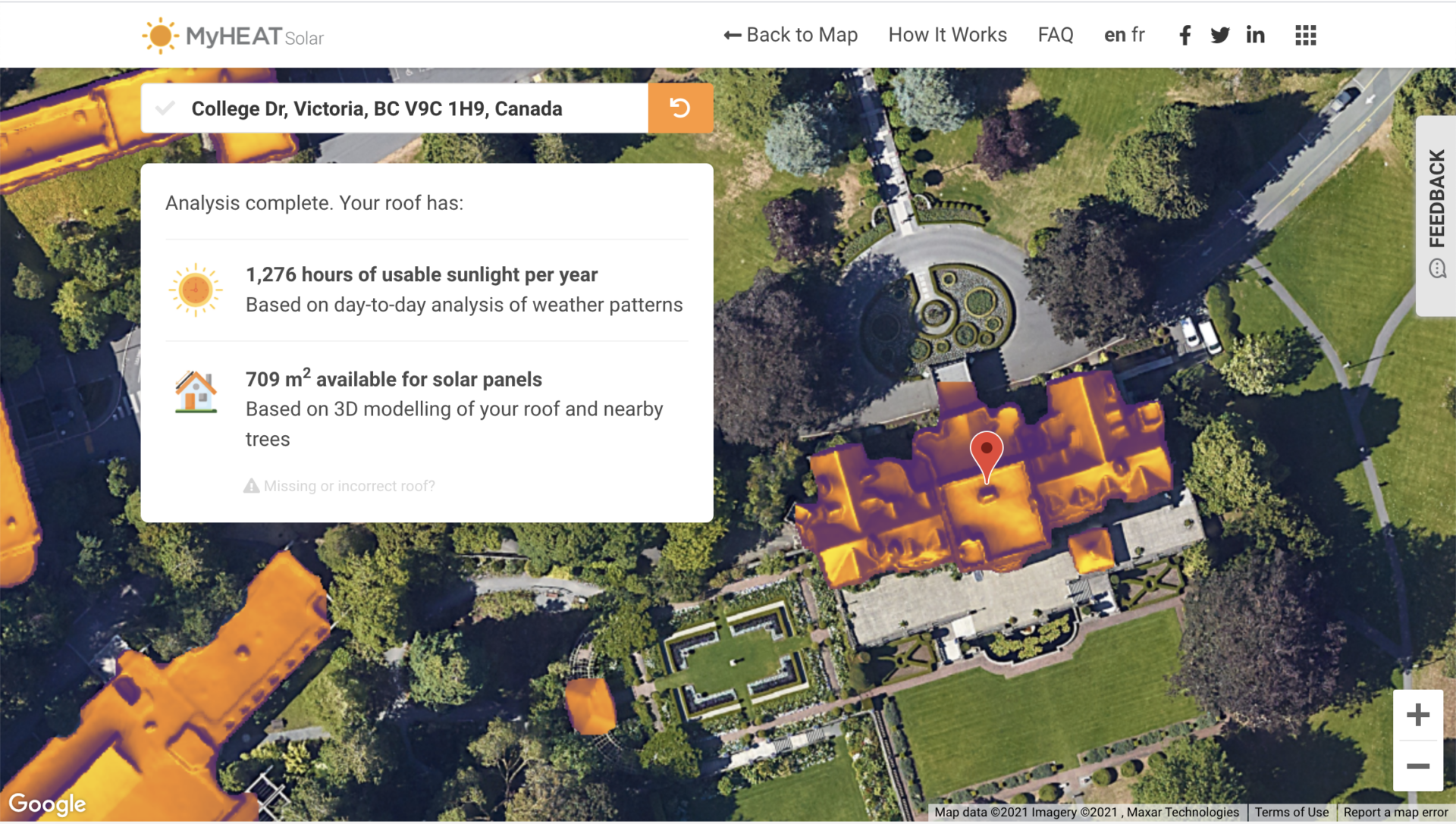
This stunning castle located in Victoria on Vancouver Island in British Columbia is an iconic building that’s over 100 years old.
Throughout its lifetime, the property has been used as a primary residence by the Lieutenant Governor of B.C. who originally commissioned the building’s construction as the Royal Roads Military College from 1948 to 1995. The building is now home to the Royal Roads University.
Owing to Hatley Castle’s eloquent Tudor-style features, beautiful gardens, and surrounding grounds, it has made many movie and TV appearances over the years. Most notably, the castle was featured in X-Men as Xavier’s School for Gifted Youngsters, as the Osbourne Estate in several Spider-Man movies, and has made appearances in TV series Arrow, Smallville, Bones, and MacGyver!
While installing panels on a heritage castle may be somewhat of a challenge, there are many pockets of rooftop suitable for solar, and there’s a sort of charming warmth from the idea that a 113-year-old castle could be kept warm and cozy inside with solar panels.
Find out if your building has good solar potential
MyHEAT’s SOLAR Maps reveal the solar potential for an array of fascinating buildings, as well as residential buildings, municipal buildings, and everything in between. At MyHEAT, we know maps, we know energy efficiency, and we specialize in Energy Made Visible™.
Get in touch with us to discuss making solar energy visible for your area, whether in Canada or beyond!
Written by:
James Henry, Director of Sustainability and Growth at MyHEAT



